Jan Bartek – AncientPages.com – Excvations in the ancient Mesopotamian city of Lagash continue, and archaeologists report they have unearthed a 5,000-year-old food tavern.
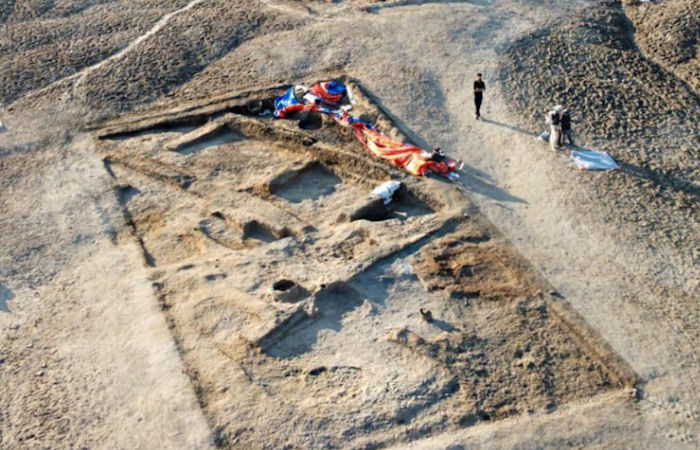
A close-up of the ancient “tavern”. Credit: Lagash Archaeology Project
This ancient eating place was hidden only 19 inches below the surface. It was split into an open-air dining area and a room containing benches. Scientists found an oven, ancient food remains, and even a 5,000-year-old fridge at the site.
On the plaster floor of this room were hundreds of ceramic bowls and beakers that seemed to have fallen from shelves and benches along the eastern wall, many with their original content (food and drink, with plentiful animal bones and organic residue) still in situ.
In the southeastern corner of the same room was a large circular installation. Upon inspection, it consisted of the reused bottoms of two large jars, carefully cut and placed inside the other, with the space between them packed with pottery sherds. This double ceramic feature appears to have been a cooling device for storing beverages.
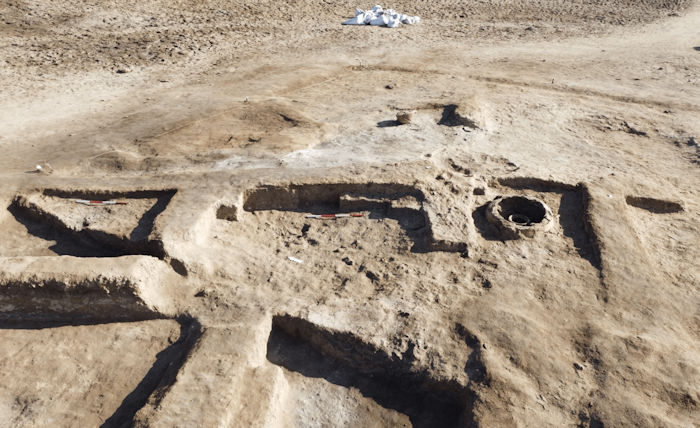
People cooked and ate food here 5,000 years ago. Credit: Lagash Archaeology Project
“I think the first feature to show itself was this very large oven and it’s actually beautiful,” Reed Goodman, an archaeologist from the University of Pennsylvania, told CNN. “From various burning episodes and deposits of ash it left a sort of rainbow coloration in the soils and the interior is framed by these big bricks.”
With the help of drone footage, scientists have previously confirmed the ancient Mesopotamian city Lagash, between the Tigris and Euphrates rivers, where modern-day Iraq lies, was made of marsh islands.
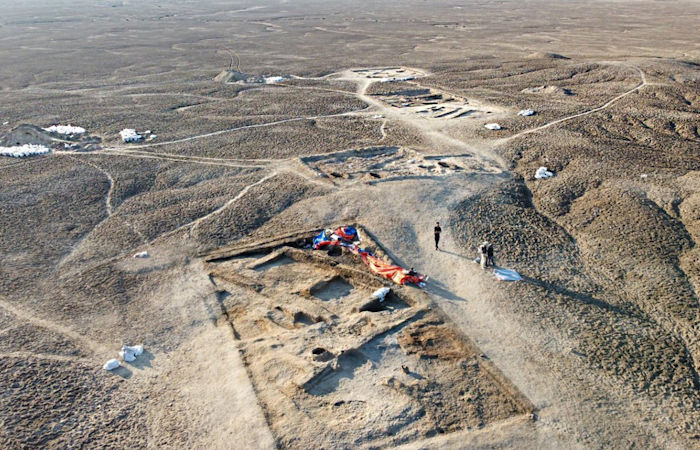
Credit: Lagash Archaeology Project
Anthropological archaeologist Emily Hammer of the University of Pennsylvania explained that remote-sensing data, mostly collected by a specially equipped drone, offers evidence a vast urban settlement called Lagash largely consisted of four marsh islands connected by waterways. These findings add crucial details to a growing consensus that southern Mesopotamian cities did not, as previously thought, expand outward from the temple and administrative districts into irrigated farmlands surrounded by a single city wall.
“There could have been multiple evolving ways for Lagash to be a city of marsh islands as human occupation and environmental change reshaped the landscape,” Hammer says.
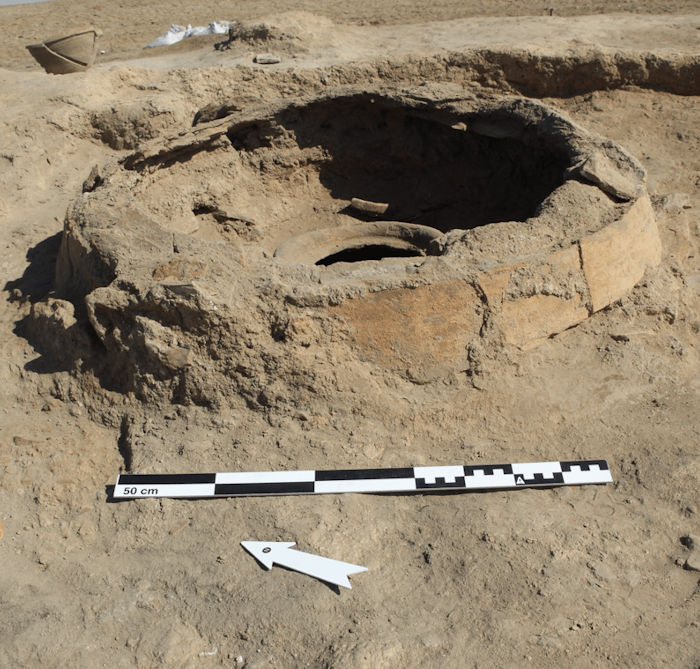
Credit: Lagash Archaeology Project
The surprising discovery of the large “tavern” complete with benches, a type of clay refrigerator called a “zeer,” an oven, and the remains of storage vessels, many of which still contained food, offer new information about the site.
“It’s a public eating space dating to somewhere around 2700 BCE,” says Holly Pittman, a professor in Penn’s History of Art department, curator of the Penn Museum’s Near East Section, and the Lagash project director. “It’s partially open air, partially kitchen area.”
The find provides another glimpse into the lives of everyday people who dwelled some 5,000 years ago in this part of the world.
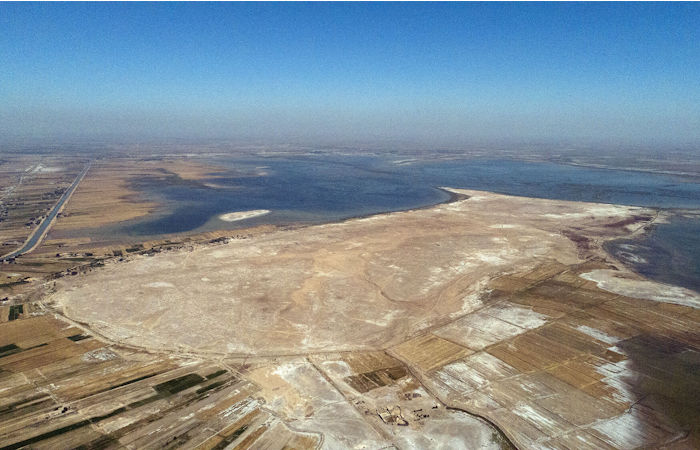
Holly Pittman and a team of researchers studying the archaeological site of Lagash, seen at bottom center, hypothesize that the ancient city was likely a significant population center that had ready access to fertile land and people dedicated to intensive craft production. Credit: Courtesy of Lagash Archaeological Project
Uncovering a tavern supports the perspective of Pittman and her team that society was not organized into just elites and enslaved people — the previous prevailing view — but included an ancient middle class.
“The fact that you have a public gathering place where people can sit down and have a pint and have their fish stew, they’re not laboring under the tyranny of kings,” Goodman said.
See also: More Archaeology News
“Right there, there is already something that is giving us a much more colorful history of the city.”
Partnering with the community, scientists are slowly learning more about the ancient city of Lagash, which was part of a network of ancient cities in Iraq.
Written by Jan Bartek – AncientPages.com Staff Writer





